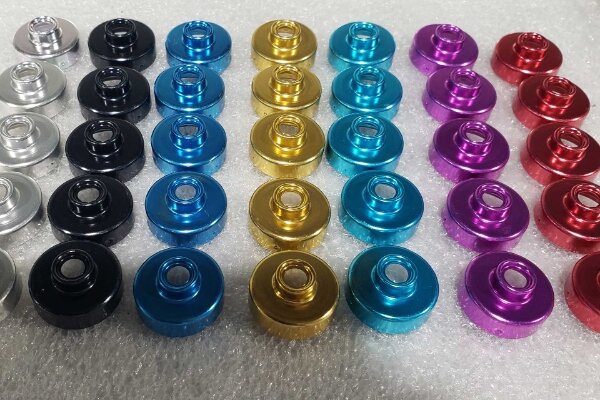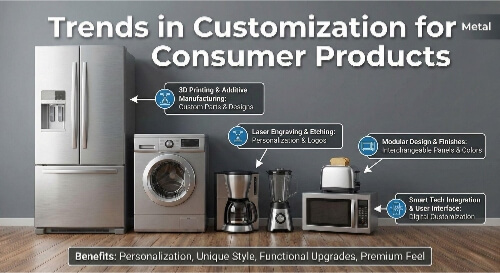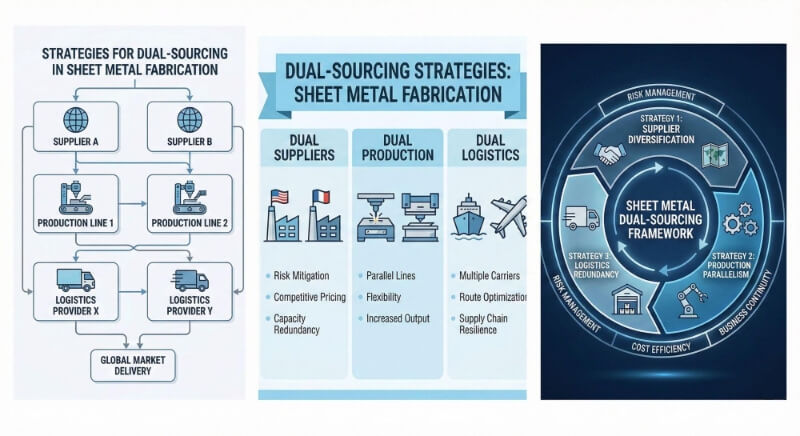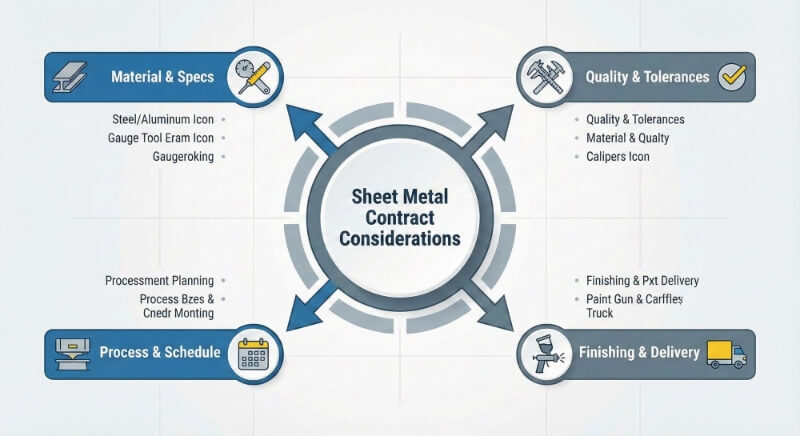Are you looking for a metal finish that is both attractive and durable? Many product teams face this challenge. They need parts that look professional but can also handle daily wear and tear. Bright dip anodizing solves this problem. It gives aluminum a shiny, even finish that resists wear and corrosion.
This process can make your aluminum parts look newer for longer. Let’s examine how it works and where it works best.

What Is Bright Dip Anodizing?
Bright dip anodizing is a chemical finishing process. First, the part is cleaned and degreased. Then it goes into a chemical bath that makes the metal smooth and shiny. After that, the part is anodized to form a protective oxide layer. Finally, this layer is sealed to keep the surface resistant to corrosion and maintain its shine.
Standard anodizing mainly builds a protective oxide layer. It can also be dyed; the finish is usually matte or satin. Bright dip anodizing adds an extra step before anodizing. The part goes through a chemical bath that evens the surface and increases reflectivity. This makes bright-dipped parts look glossy and more uniform.
Chemistry Behind Bright Dip Anodizing
The chemistry of bright dip anodizing needs accuracy. Each stage depends on the right solution, surface reaction, and control settings to create a clear and reflective finish.
Typical Acid Solutions Used
Bright dip baths often use a mix of phosphoric acid and nitric acid. Phosphoric acid dissolves small surface bumps, while nitric acid clears away oxides and smut that build up during the process. Some formulas also add sulfuric acid or other agents to improve control. The mix must stay balanced to keep the process safe and consistent.
How the Metal Surface Reacts?
When aluminum enters the solution, the acids attack high spots on the surface faster than the low spots. This action levels the surface and reduces tiny rough areas. The smoother layer reflects light more effectively. After this step, anodizing creates a clear oxide coating that protects the polished surface.
Factors That Affect Brightness
Several factors control how bright the finish becomes. Acid concentration must remain within a tight range. Bath temperature changes the speed of the reaction. Immersion time also matters. If it is too long, the surface can dull. If it is too short, the shine is weak. The aluminum alloy itself also makes a difference. Some alloys react well to bright dipping, while others show less effect.
The Bright Dip Process: Step-by-Step Breakdown
Bright dip anodizing follows a set sequence. Each stage prepares the aluminum for the next, ensuring shine and durability.
Step 1: Pre-Treatment
First, we must prepare the aluminum part. This involves a thorough cleaning to remove all oils, dirt, and grease. We often use an alkaline cleaner for this. After cleaning, we rinse the part in clean water. Next, we perform etching. Etching removes a thin layer of aluminum to create a uniform surface.
Step 2: Bright Dip Immersion
The part is lowered into the acid solution. High points on the surface dissolve faster, leaving a smoother layer. Time, temperature, and acid mix are carefully controlled to produce a consistent, glossy finish.
Step 3: The Anodizing Stage
After bright dipping, the part moves to the anodizing tank, which contains a sulfuric acid solution. We submerge the part and apply an electrical current, which causes oxygen ions to bond with the aluminum surface. This reaction builds a hard, porous aluminum oxide layer.
Step 4: Rinsing and Sealing
The part is rinsed to remove acid and residues. It is then sealed, often in hot water or nickel acetate. Sealing closes the pores in the oxide layer, improving corrosion resistance and locking in the shine.

Process Variables
The quality of a bright dip finish depends on precise process control. Small temperature, time, or chemistry changes can change the final look and performance.
Temperature Control
The temperature controls how quickly the aluminum reacts with the acid. A higher bath temperature speeds up the reaction, making the surface smoother and more reflective. But if the temperature climbs too high, the surface may etch unevenly and show streaks or cloudy spots.
Lower temperatures slow the process and may not create enough shine. For most alloys, operators keep the bath between 95°C and 105°C. In some setups, the range is held tighter, at 98°C ± 2°C, to improve repeatability.
Immersion Time
Immersion time sets how much the surface is polished. A short time in the bath may not fully remove micro-peaks, which leaves the part dull or patchy. Over-etching can thin the metal and reduce brightness if the part stays too long.
Most small parts need 20 to 60 seconds in the solution. Larger or thicker sections may take up to 2 minutes. The exact time depends on the alloy, part size, and bath condition. To find the right timing, technicians often test coupons before production.
Acid Concentration and Composition
The acid mix defines the finish. Phosphoric acid smooths the surface, while nitric acid clears away oxides and prevents smut. If the nitric acid is too low, dark smut can stay on the part. The surface may lose brightness and look gray if it is too high.
Typical concentrations are around 70–75% phosphoric acid and 2–10% nitric acid, though exact ratios vary by alloy and supplier guidelines. Additives such as wetting agents can improve coverage and give a more even polish. Because the bath changes with use, operators run chemical tests daily or weekly.
Advantages of Bright Dip Anodizing
Bright dip anodizing offers more than visual appeal. It combines beauty with practical performance, making aluminum parts stronger, longer lasting, and easier to care for.
Improved Aesthetic Appeal
The process creates a smooth, mirror-like surface. Parts look polished and high-end without extra mechanical buffing. This finish is uniform, consistent, and suitable for visible components.
Corrosion Resistance
The anodized oxide layer shields aluminum from moisture and chemicals. This protection keeps parts from staining or oxidizing in normal service environments.
Durability
The hardened oxide coating resists wear and scratches. Parts hold their shine longer even when exposed to handling or outdoor conditions.
Ease of Maintenance
Bright dip-anodized surfaces are simple to clean. Dirt, oils, and fingerprints wipe away without damage, reducing upkeep and helping parts stay attractive over time.
Common Challenges and Solutions
Even a stable process can face problems. Here are some of the most common issues and how to deal with them.
Surface Defects and Fixes
Streaks or cloudy areas can appear on the surface. This usually results from uneven etching or dirt on the part. The solution is to clean each part carefully before the bright dip step. It also helps to check that the acid strength and bath temperature stay steady.
Sometimes a white, powdery film called bloom can appear after anodizing. This often means the rinsing step was not done well. Improving the rinsing process usually prevents this problem.
Working With Complex Shapes
Parts with deep holes, tight corners, or complex designs are harder to process. The bright dip solution may not reach all surfaces evenly, leaving dull areas. To solve this, the bath needs constant movement. Agitating the solution or the part helps the liquid cover every surface. Proper racking also makes a difference. Place parts so that air cannot get trapped inside recesses.
Managing Waste and the Environment
The process uses strong acids and produces waste. Used acid must be handled under strict environmental rules. Many shops solve this by installing waste treatment systems. These systems neutralize the acid so the leftover sludge can be disposed of safely.
Some shops also use closed-loop rinse systems. These systems capture and reuse water, reducing waste and lowering water use.

Applications Across Industries
Bright dip anodizing provides both protection and visual appeal. Its combination of shine and strength makes it useful in many industries.
Decorative Uses
This finish often appears on high-end consumer products, such as furniture trim, luxury appliances, and jewelry. Its mirror-like shine creates a modern look that signals quality. Architects also choose it for panels and signs that must stay attractive for years.
Automotive Components
Car makers use this finish for both interior and exterior parts. Examples include badges, grille surrounds, and door handles. The coating resists weather, salt, and sunlight, and the bright look adds to the vehicle’s style.
Medical Equipment
Medical companies apply this finish to handheld tools and equipment enclosures. The smooth surface does not trap bacteria and can withstand repeated cleaning with strong chemicals, making it a reliable choice for hospitals and clinics.
Lighting Fixtures
Lighting products often include reflectors and trim rings with this finish. The reflective surface improves brightness and efficiency. It also holds up well under heat from bulbs or LEDs, ensuring a consistent look and performance over time.
Conclusion
Bright dip anodizing delivers a bright, reflective finish with strong surface protection. It smooths aluminum, resists corrosion, and increases durability. Because of this, industries use it for appearance and performance, from car trim to medical devices and lighting.
Bright dip anodizing is a trusted choice for sharp-looking and reliable parts. Contact our team to discuss your project or request a quote.
Hey, I'm Kevin Lee

For the past 10 years, I’ve been immersed in various forms of sheet metal fabrication, sharing cool insights here from my experiences across diverse workshops.
Get in touch

Kevin Lee
I have over ten years of professional experience in sheet metal fabrication, specializing in laser cutting, bending, welding, and surface treatment techniques. As the Technical Director at Shengen, I am committed to solving complex manufacturing challenges and driving innovation and quality in each project.




